Everyone is familiar with the great pyramid of Giza and the mysterious tomb of Tutankhamun, the latter of which easily become one of the top attractions in the Valley of the Kings in Luxor, Egypt.
However, next to it is a less famous but equally charming tomb of Queen Nefetari (QV66).
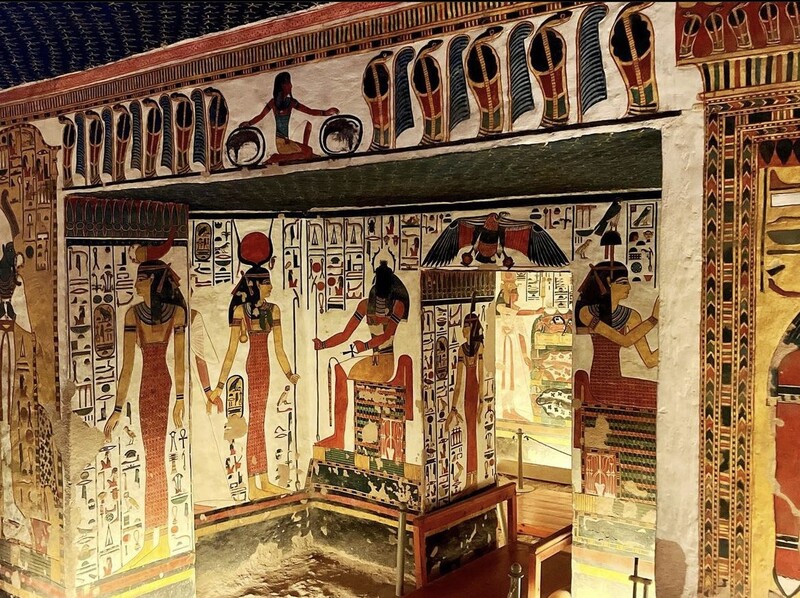
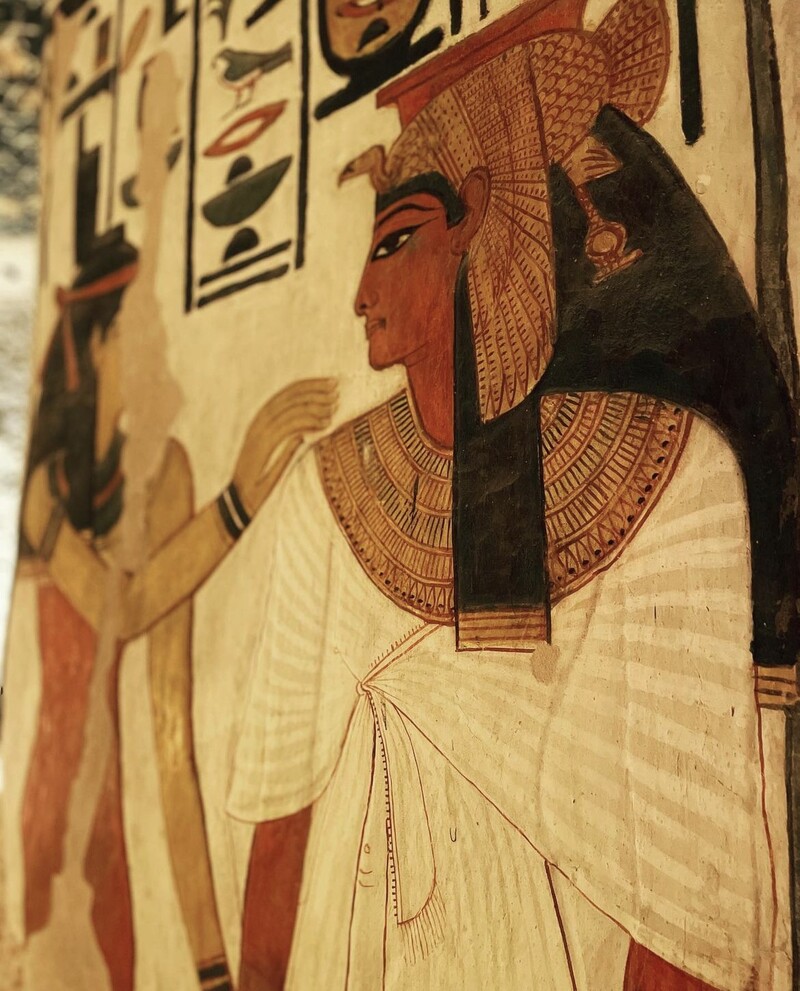
Located in Luxor’s lesser-visited Valley of Queens, Nefetari’s resting place may be a little less known than the kings. However, it is said to be one of Egypt’s most lavish, with numerous large gold illustrations above the dazzling star-covered ceiling and the story of thousands of years of history.
What is the valley of the queens famous for?
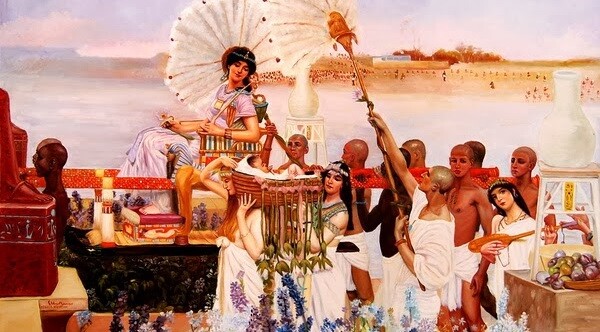
Called “Wadi al Mekalat” in Arabic, the Valley of the Queens is an important historical site in Egypt where the wives of ancient pharaohs are buried. “Ta Set Neferu”, which translates as “Place of Beauty” – and some of these Queens’ tombs are indeed exquisitely constructed, especially that of Queen Nefetari.
What Makes Nefetari’s Tomb a Place Worth Visiting
When visiting the Tomb of Nefetari, visitors will be captivated by the history and beauty of one of the most unique places in Egypt – an experience that is sometimes overlooked for its famous attractions than.
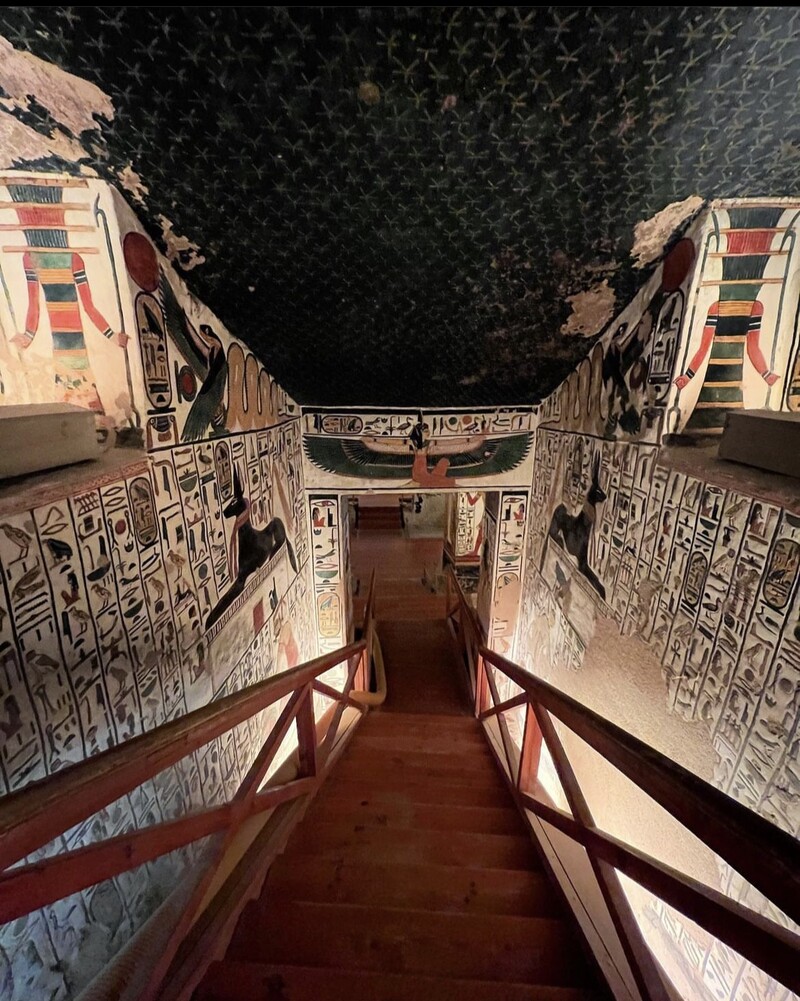
Queen Nefetari the wife of Ramses II – who is also known as Ramses the Great, is the queen who received a lot of his love, so the construction of the mausoleum was especially focused, as well as spent some money. large to complete.
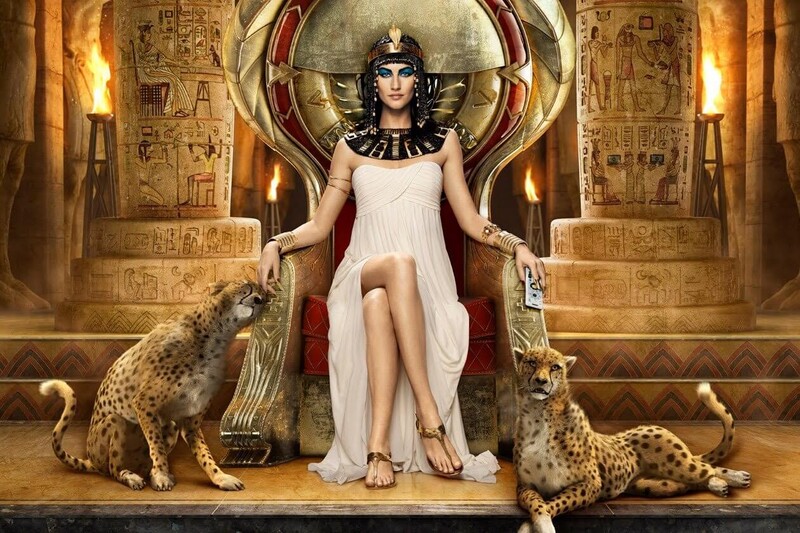
Illustration
Her opulent burial ground features well-preserved paintings that give insight into ancient Egyptian customs and beliefs – many of which depict the queen with the gods.
With all the artwork, some even relating to ancient texts from the “Book of the Dead” – Queen Nefetari’s tomb is truly one of the most important excavation sites in Egypt. Egypt.
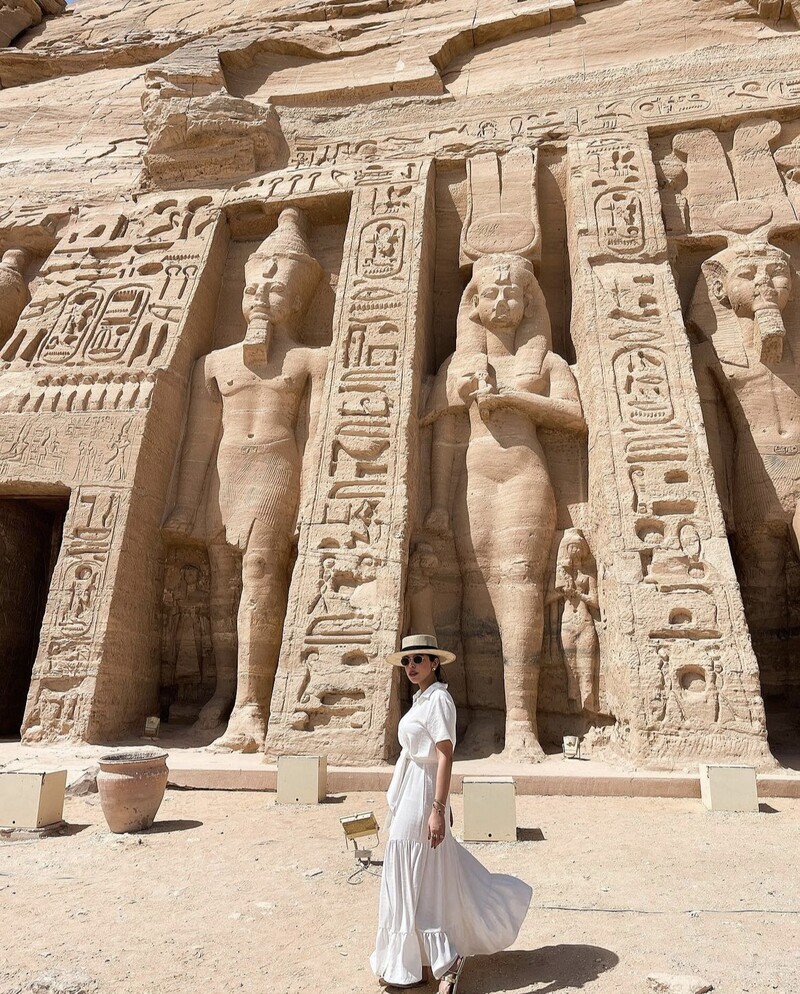
To visit the mausoleum, tourists need to head to the Valley of the Queens and pay an additional 1,400 EGP (about 2,200,000 VND) for a short, 10-minute visit.
However, many visitors consider this visit much more worthwhile, due to the royal artworks and deep historical significance of the mausoleum.
Additionally, Queen Nefetari’s tomb attracts fewer crowds than those in the famous Valley of the Kings, making it a quieter experience, free of the hustle and bustle (but also has much beauty, attraction and historical importance).
History of the Tomb of Nefetari
The life of Pharaoh Ramses II’s wife sounded like a dream – a life full in high society. However, with the custom of that time, a king would have the right to marry many wives, so Queen Nefetari had to live with and reconcile with her husband’s five other wives and hundreds of concubines.
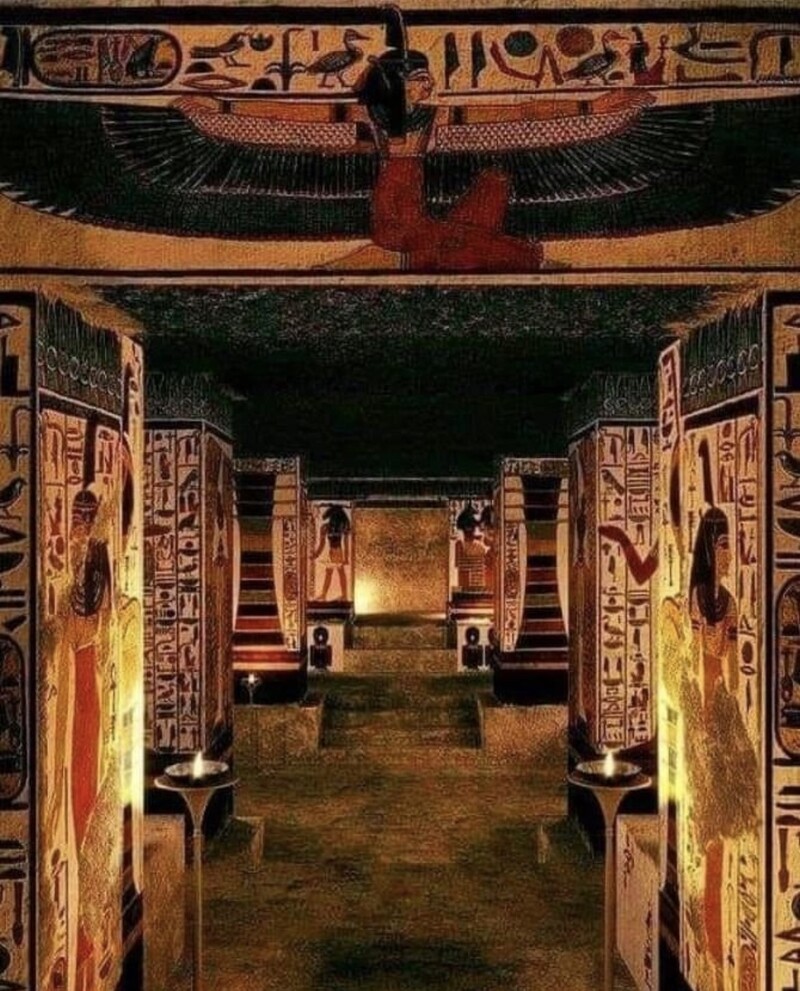
However, until her death around 1255 BC, Nefetari remained her husband’s most beloved mate. In fact, the queen was Ramses’ first wife. Although much of the historical record tells how he loved himself and spent most of his reign building his own monuments, his interest in Nefetari is well documented.
He wrote at length about his love for Nefetari, about her beauty which seems to have captivated King Ramses II. And an elegant mausoleum was his final gift to his beloved queen.

Construction of the mausoleum began around 1250 BC with skilled craftsmen, from the Deir el-Medina mausoleum project – the same workers who built the Valley of the Kings.
They completed construction of the crypt close to the year of Nefetari’s death (actually the exact same time as her burial).
The interior features stars on the ceiling and paintings and illustrations on the walls depict the eventful life and death of the queen – a beauty of their astonishing complexity that makes the tomb so special. Known as the “Sistine Chapel of Ancient Egypt”.

Due to the flow of time, like all thousand-year-old tombs in Egypt or around the world, Nefetari’s Tomb has shown signs of deterioration with its millennium age. Besides that. Another factor that causes the wear and tear of the tomb is the unfortunate circumstances that come from grave robbers.
In ancient Egypt, burying kings with all their belongings and treasures was common practice. The concept then believed that they could carry their belongings for use in the afterlife. So the Queen’s tomb is also buried with various treasures.
Sadly, when her grave was rediscovered in the 20th century, it was nearly empty – grave robbers came and took her possessions.
With the gradual decline of the ancient Egyptian civilizations, the protection of the royal tombs was lapsed, in favor of thieves who were able to enter the tombs and freely retrieve valuables. price inside.
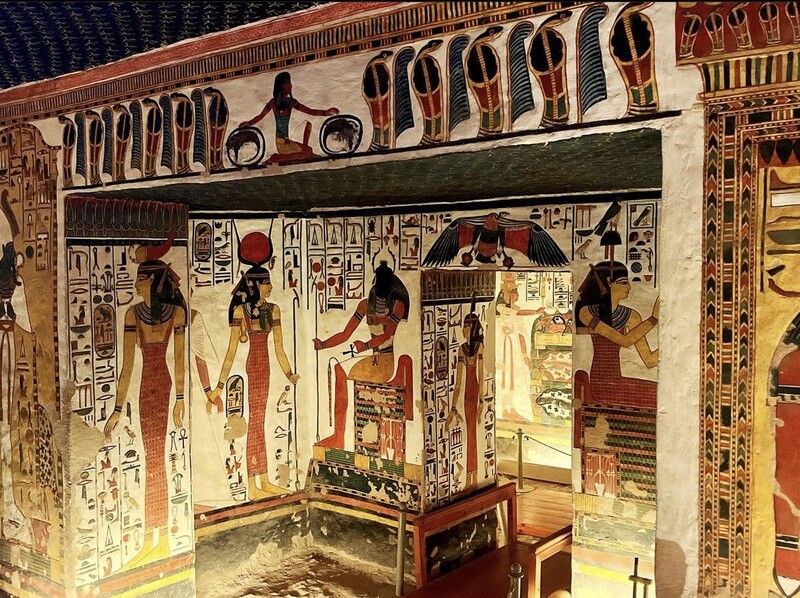
By the time the 21st Dynasty was born, tomb robbers had looted many treasures buried in the Valley of the Kings and the Valley of the Queens. Then, when Italian archaeologist Ernesto Schiaparelli found Nefertari’s tomb in 1904, the artifacts inside had all been stolen years earlier.
Not only that, the walls here also began to disintegrate, as a natural result of the effects of time left over by thousands of years. The only remnants left are pieces of pink granite from the queen’s coffin, various amulets and figurines, a pair of woven sandals and all the art interiors that are still on display today.
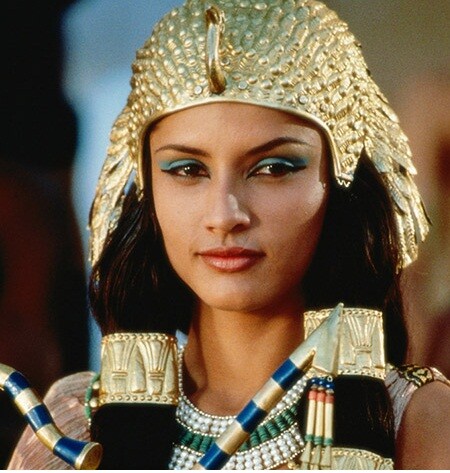
Illustration
After the tomb was excavated in 1904, international restoration teams attempted to restore it, taking several years to complete this from 1988 to 1992 – at a cost of $2 million (by the National Institute for Conservation of Nature). sponsored by Getty).
Nefertari’s Tomb opened in 1995 shortly after restoration and has been open to the public ever since.
How to visit Nefertari’s tomb?
Many visitors here opt for the Valley of the Queens tours, which cost EGP 50 ($6).
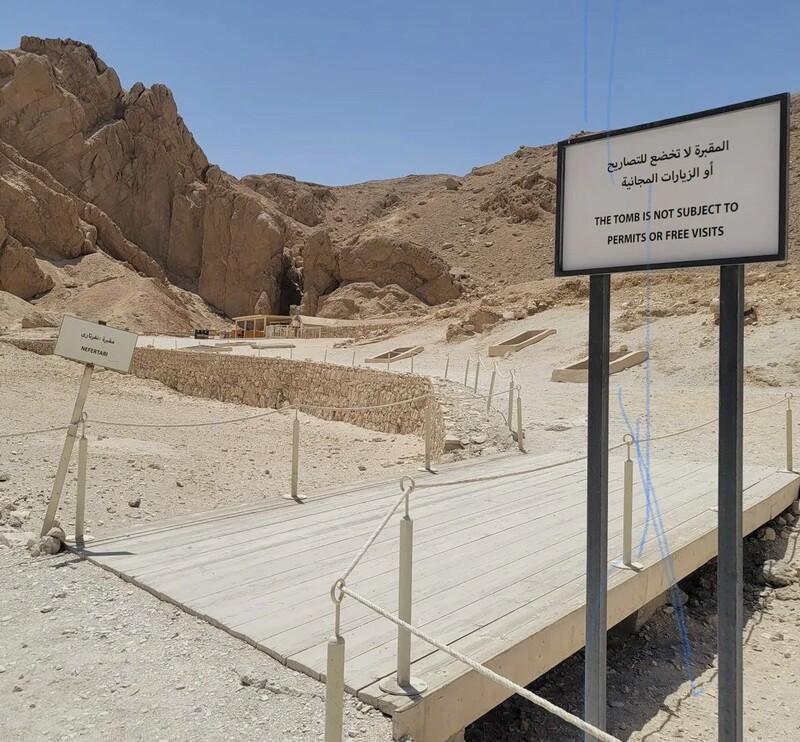
Of the approximately 70 burial sites, four are open to visitors: the tombs of Titi, Amenherkhepshef, Khaemwaset, and Nefertari. However, to see Nefertari’s tomb, visitors will need to pay an additional 1,400 EGP.
Tickets to Nefertari’s Tomb are available for purchase directly at the box office. And because of the large number of customers daily, you should buy tickets in advance.











